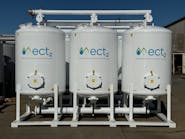Water and wastewater infrastructure projects have an extensive timeline from initial concept to final completion.
Once a project is identified, then environmental impact studies begin, affordability is evaluated, a consulting engineer is selected, more funds are acquired, and the design phase begins. Once the design phase reaches the 100 percent mark, a bid date is established. All these steps impact a project’s schedule.
Up to this point, equipment manufacturers have had a critical role in working alongside consulting engineers with the process and equipment application. However, at this pre-bid phase, equipment manufacturers haven’t been the focus of the project’s timeline. When the bid date is established and bid documents are advertised, contractors and equipment manufacturers will pay close attention to the critical timeline — the substantial completion of the project.
In 2022, there are two important questions that arise when looking at the substantial completion and project budget: Has the substantial completion of the project been adjusted to reflect supply chain disruptions, and what other adjustments were made to the project that was designed in 2019 pre-pandemic, put on hold, and now advertised for a mid-2022 bid?
All industries have been affected by disruptions in the supply chain, which in turn impacts the project’s completion. When the pandemic began, U.S. and global spending was reduced. The slowdown, however, did not occur in the water industry — given budgets had already been established.
Infrastructure projects continued, while people held off spending as they tend to do during uncertain times. Water and wastewater projects in the early days of the pandemic generally stayed within expected completion timelines.
In mid-pandemic, people adjusted to the new norm, vaccines were rolled out, and consumer confidence grew, unleashing consumer demand for all kinds of products. Even though the bulk of goods during the purchasing frenzy had nothing to do with water and wastewater equipment, they created a bottleneck in supply chains and routes.
This affected arrival of raw material, electrical components, motors, and more. Plants producing these consumer goods reemerged from shutdowns and, to this date in early 2022, have yet to recover.
Though the buying frenzy had a major effect on the supply chain, other factors continue to impact manufacturers.
Labor shortages continue to be a widespread issue, as evidenced by current hiring challenges in the water and wastewater industry. Pre-pandemic, Baby Boomer retirements were imminent, which has long affected water and wastewater equipment manufacturers and general contractors all searching for the same welders, pipe fitters, and painters.
The labor shortage has also affected those freight companies bringing goods to our factories and job sites. Several months ago, an executive of the American Trucking Association indicated that before the pandemic, the trucking industry was short close to 60,000 truck drivers. Today, the association predicts the demand for drivers will grow to 160,000 over the next decade.
These factors are affecting project timelines in our industry and will certainly affect project budgets given inflationary pressures. Uncertainty about new Buy America requirements and the potential impact on material availability will further exacerbate the situation.
Adjustments need to be made to substantial completion timelines and budgets need to be re-evaluated ,using various specialized material price indices and other sources. As we work through the first quarter of year and look to the remainder of 2022 and 2023 projects, we all look forward to working side by side with all involved parties for the successful completion of critical infrastructure projects necessary to protect water, people, and the environment. WW
Published in WaterWorld magazine, March 2022.



